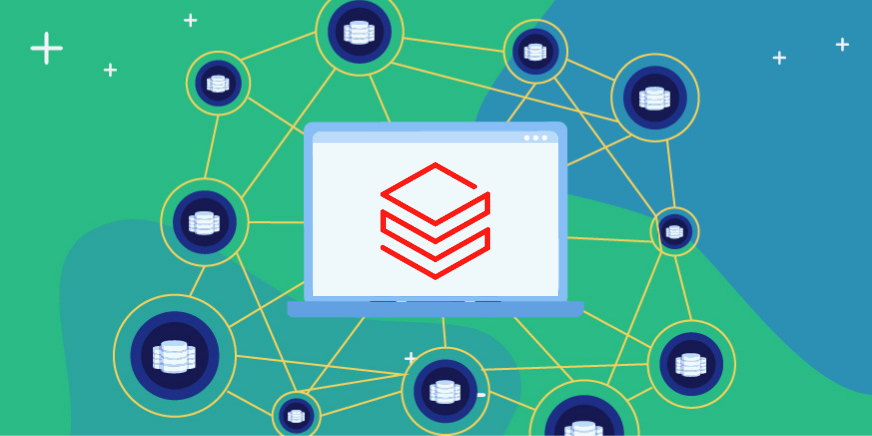In the ever-evolving landscape of cybersecurity, challenges abound, and businesses grapple with the daunting task of protecting their digital assets. As cyber threats become more sophisticated, the need for robust security measures has never been more critical. In this blog, we delve into two heroes of the cybersecurity realm: access management and backup and disaster recovery (DR).
Navigating the Cybersecurity Battlefield: Challenges and Solutions
Businesses today confront many challenges, navigating a digital battlefield fraught with unseen adversaries. From insidious phishing attacks to the constant evolution of malware, the challenges are diverse and ever-shifting. As the digital landscape expands, so does the surface area for potential threats, transforming the cybersecurity landscape into a perpetual chess match where staying one step ahead is imperative.
Amidst these challenges, access management emerges as a crucial gatekeeper, controlling who gets in and what they can access. It acts as a digital bouncer, ensuring only authorized individuals enter the premises.
On the flip side, backup and DR play the role of an unsung hero ready to swoop in when the worst happens. It serves as a safety net, ensuring that data remains secure even in the face of a cyber onslaught and business continuity prevails.
Prerequisites: Connect the Datastore
The challenges underscore the significance of this dynamic duo:
- Unauthorized Access: Robust access management controls, such as Identity and access management (IAM), data access control, multi-factor authentication (MFA), and least privilege access models, are pivotal in preventing breaches by limiting access to authorized individuals.
- Ransomware Attacks and Data Encryption: Regular backups of data, applications, and systems stored in air-gapped or immutable storage thwart ransomware attempts, ensuring companies retain control over their data and enabling quick recovery.
- Insider Threats and Data Exfiltration: Granular access logging and monitoring through Data Security Platforms and IAMs facilitate the detection of abnormal insider behavior or data theft. Air-gapped backups act as a safeguard, preventing insiders from tampering with backup data.
- Accidental Data Deletion or Corruption: Backup solutions maintain offline copies of data and systems, protecting against human errors and enabling quick restoration in the event of accidental changes or deletions.
- Supply Chain Attacks and Third-Party Vulnerabilities: Restricting external access to necessary levels and regular backups helps minimize the impact of third-party compromises, ensuring continued operations even in the face of external vulnerabilities.
- Compliance Issues and Auditing Weaknesses: Access management provides comprehensive logs and audit trails, meeting compliance requirements, while regular backups support adherence to data retention and retrievability policies.
This intricate interplay between access management and backup and DR addresses challenges and reshapes the cybersecurity narrative, creating a robust defense against the ever-evolving threatscape.
Uniting Forces: Access Management and Backup and DR
When faced with onslaught of ever-evolving cyberthreats, the true resistance and power lies in unity. Let’s delve deeper into how access management and backup and DR seamlessly integrate, forging an impenetrable alliance against digital threats:
Synergies and Interactions
1.Access Management and Backup and DR Integration: Imagine a fortress where the guards control entry and have a direct line to reinforcements. Integrating Access Management with backup and DR ensures access controls align with data protection policies. If an access point is compromised, the backup system remains vigilant.
- Dynamic Access Adjustments: Access Management dynamically adjusts access controls based on real-time threat intelligence. This integration ensures that if a sudden spike in cyber threats is detected, the backup system adapts access privileges accordingly to mitigate risks.
- Automated Backup Triggers: Anomalies in access patterns trigger automated backup processes. For example, if an authorized user starts accessing sensitive data during non-standard hours, the system can initiate a backup to preserve the state before any potential threat unfolds.
2. IAM and Backup Synchronization: Identity and access management (IAM) don’t just limit access; they orchestrate a symphony. When synchronized with backup and DR, IAM ensures that the right users have the correct access levels during data recovery. It’s about securing not just entry points but the entire journey.
- Role-Based Data Recovery: IAM defines user roles, and when linked to backup and DR, it ensures that data recovery aligns with these roles. Critical data associated with specific roles is prioritized during recovery, streamlining the restoration process.
- Access-Driven Recovery Protocols: IAM protocols guide the recovery process if certain data is encrypted due to a cyber incident. For instance, if MFA is required for specific data access, the backup system incorporates these protocols into the recovery workflow.
Joint Cybersecurity Impact of Access Management and Backup and DR
Let’s delve into real-world scenarios where the collaboration between access management and backup and DR delivers decisive victories:
Phishing Resilience: Access Management fortifies your frontline defenses, ensuring that even if a phishing attack compromises a user’s credentials, the access granted remains limited. Meanwhile, backup and DR stands as the last line of defense, guaranteeing a clean, pre-attack data state.
- Zero Trust Access Policies: IAM, operating on zero-trust principles, limits access based on continuous verification. When tied to backup and DR, this means that even if a phishing attack succeeds in gaining minimal access, the backup system ensures that compromised data is swiftly identified and restored.
- Rapid Data Rollback: In the aftermath of a phishing attack, backup and DR rapidly rolls back data to a secure state, rendering any unauthorized changes or encryption ineffective. The synergy ensures minimal downtime and data integrity restoration.
Insider Threat Mitigation: IAM detects abnormal access patterns, signaling potential insider threats. When coupled with backup and DR, this synergy ensures that even if an insider tries to manipulate or delete data, immutable backups stand firm, preserving the unaltered truth.
- Behavioral Anomaly Alerts: IAM continuously monitors user behavior, triggering alerts for suspicious activities. In collaboration with backup and DR, these alerts prompt immediate data integrity checks and, if necessary, swift recovery.
- Immutable Backups as Forensic Tools: Immutable backups serve as forensic tools, providing an unaltered record of events. In the case of insider threats, these backups become invaluable for investigations, ensuring a thorough understanding of the incident.
Practical Tips for Implementing Both Effectively
Policy Alignment: Ensure that Access Management policies align seamlessly with backup and DR protocols. Consistent policies guarantee that the right individuals have access, and their activities are protected by robust backup mechanisms.
- Policy-Driven Recovery: Define recovery policies within the IAM framework. For instance, if a specific department faces a cyber incident, IAM policies guide the prioritized recovery of critical data associated with that department.
Regular Testing and Validation: Test the integration regularly. Simulate cyber threats to validate that access controls remain resilient, and backup systems can recover quickly and effectively.
- Red Team Exercises: Conduct red team exercises that include IAM manipulation and cyber threats. These exercises validate the real-time adaptability of access management and the robustness of the backup and DR response.
Employee Training: Educate your team on the integrated cybersecurity strategy. Awareness of access management principles and backup and DR protocols empowers employees to be proactive guardians of digital assets.
- Security Awareness Programs: Include joint training sessions illustrating how access controls and backup mechanisms work together. This enhances individual cybersecurity awareness and fosters a collective responsibility for data protection.
Conclusion
In cybersecurity, where threats loom large and tactics evolve, the alliance of access management and backup and DR emerges as the dynamic duo, not just meeting challenges but reshaping the narrative.
As you navigate this cyber battleground, remember: robust access controls, fortified by resilient backup strategies, aren’t just a defense; they’re a proactive stance against the unseen adversaries.
So, whether it’s IAM adapting to dynamic threats, a Data Security Platform applying to data security and access, or backup and DR standing as the last line of defense, this power couple ensures your digital fortress remains impervious.




